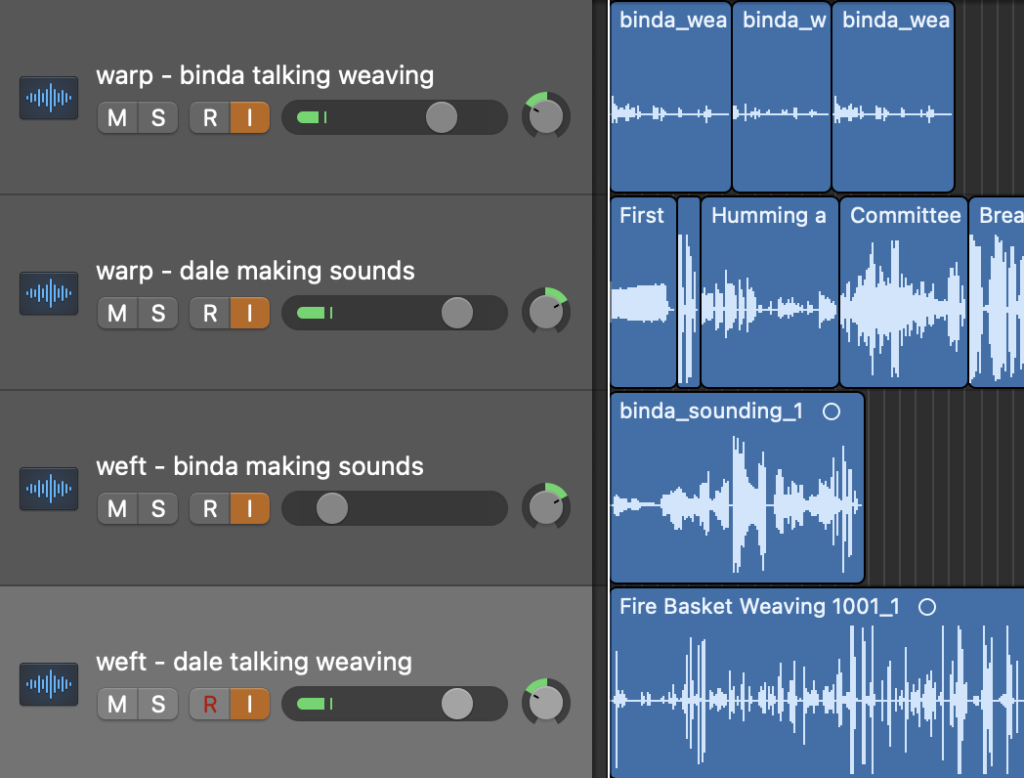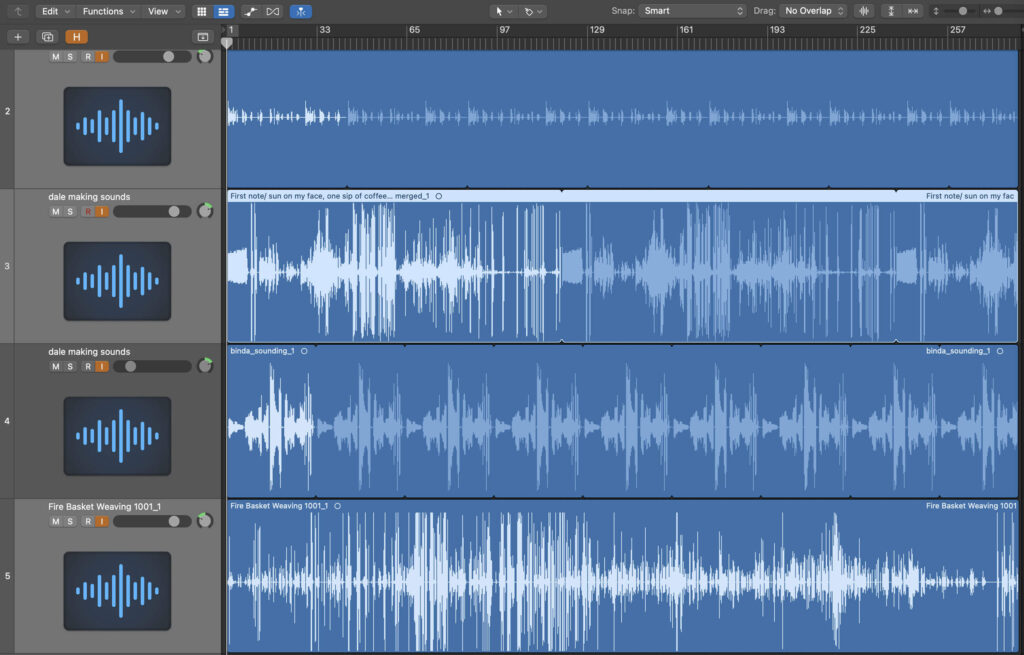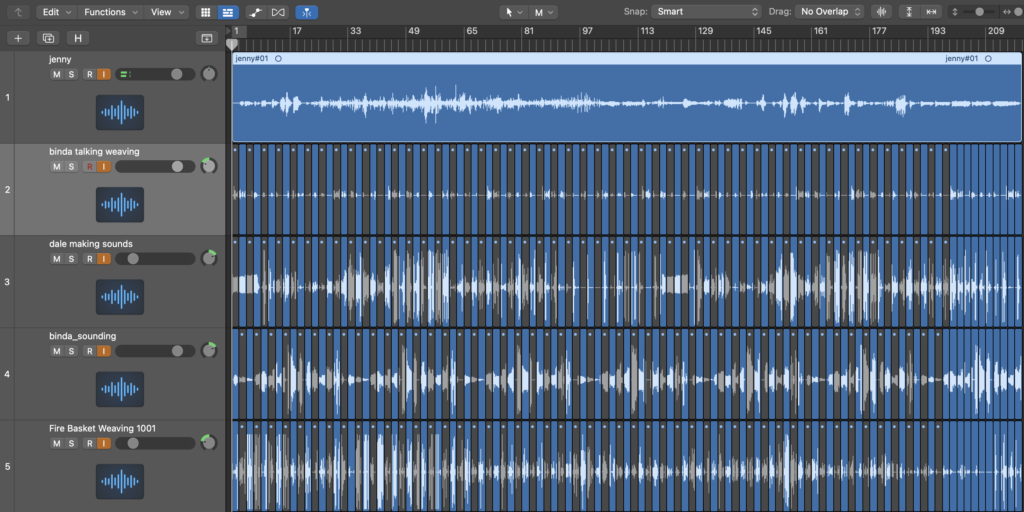response
Jenny
The most striking image and metaphor, for me, from Binda’s Movement 9 video was the piece of weaving she made out of a moon phase chart and a photograph of her own work.
I wanted to weave something in response.
At first I thought about making an enormous long coat out of some
meaningful old fabrics (Binda is tall and loves long coats). Or
something even bigger, like a curtain big enough to tent her house.
Then Dale sent a photo of his latest fire, which was itself a kind of
woven basket of wood. Synchrodipity! as a friend says.
I began thinking about weaving these artists together with sound.
My first question to myself was: How can I create an audio equivalent to a warp/weft structure?
Binda’s moon-phase weaving also made me think of a second set of axes: wax and wane.
Finally, the soundwork Binda and I had done the previous week,
creating a grieving song for a dear friend, had incorporated elements of randomness that turned out to be generative and beautiful. I decided I wanted this weaving to be done in a third dimension as well: chance and choice. In order to maximize the “chance” axis, I decided to weave the sounds together visually, creating a kind of basket structure on my screen, before I listened.
I asked both Binda and Dale for two audio tracks. One track was to be them making sounds (I didn’t get any more specific than that); the other track was to be their speaking about the weaving they’d done — Binda in Movement 9 and Dale for his fire.
How to Weave a Soundbasket
Soundbasket weaves in three dimensions:
warp & weft | wax & wane | chance & choice
1. Solicit two audio tracks from each of two different people (four tracks total). Invite one of the audio tracks to be sound-making and the other to be speaking. If you wish, invite both people to speak about the same topic/idea/theme.
2. Separate the tracks into two groups: Warp and Weft. Each group should contain the sound-making track of one person and the speaking track of the other person.

3. The length of the longest track will determine the length of the song. Loop the other tracks to extend them to the length of the longest track. You should now have four tracks of equal length.


4. Without listening to any of the tracks, set an arbitrary tempo. (In my case, I chose 100bpm, to honor the fact that it was Movement 10.) This will create a structure of measures so that you can divide the tracks into equal time periods.

5. Split all four tracks into two-measure chunks.

6. Now alternate muting of the warp/weft groups to make an “over/under” structure that looks like the weaving of a basket. Every two measures, either the warp group or the weft group (but not both) is audible. Do not mute any of the last 10 two-measure groupings; this will “finish off” the basket, tucking the two threads together. You have now completed the warp/weft structure.

7. To create the wax/wane structure, automate the volume within each group so that one track is at peak volume when the other is at trough. Let the volume rhythm be a regular but different length from that of the warp/weft structure. (I chose three measures from peak to trough.)


8. Steps 1–7, taken together, create the “chance” strand. To create the “choice” strand, add a new blank audio track. Prepare to record.
9. Listening to the warp/weft/wax/wane fabric for the first time, record an improvisation the length of the song.

10. Your recording is complete. Without changing the individual track levels, set any EQ or compression you desire. Bounce the project. Listen to your soundbasket.
After the soundbasket was done, I got interested in what a simpler piece might sound like. Here’s a single twining of just Binda’s and Dale’s speaking tracks, an over/under of their voices. Sometimes they’re each being silent when it’s their “turn” to talk:
